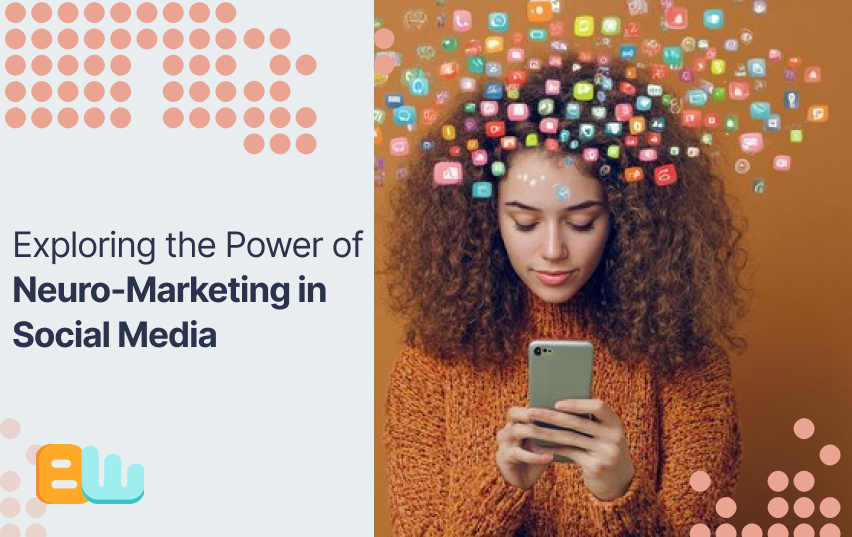
Want to know why some social media posts get thousands of shares while others flop?
The answer isn’t just good luck or perfect timing. It’s neuroscience.
Today, I’m going to show you exactly how the world’s top brands are using neuro-marketing principles to drive engagement, shares, and—most importantly—sales through social media.
In this comprehensive guide, you’ll discover:
- The precise brain mechanisms that influence what we click, share, and buy
- 5 neurological triggers you can ethically use to boost conversion rates
- Step-by-step strategies for creating content that activates dopamine release
- Real case studies from Netflix and Apple that you can model your campaigns after
The best part? These techniques work regardless of your industry or budget size.
Let’s dive in.
Understanding the Neuroscience Behind Digital Consumer Behavior
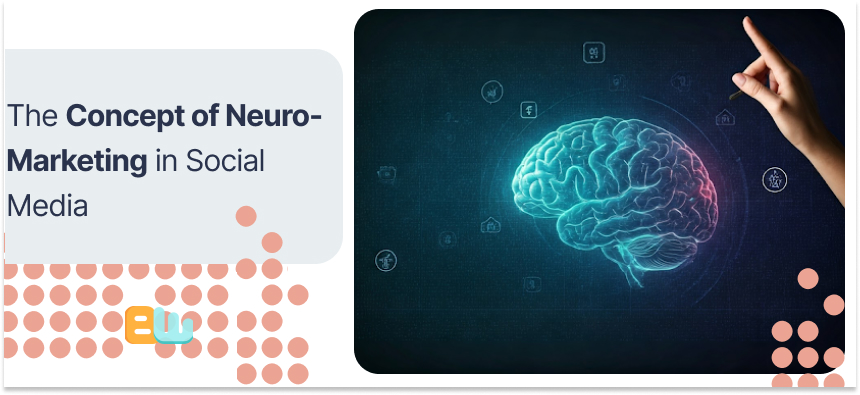
Users who scroll through different social media platforms might make minor decisions according to their daily needs. Should I buy this product? Should I read this story to the end? Should I click on this link or just let it go?
These decisions happen in milliseconds—often before you can think about it deeply.
According to research from the Nielsen Norman Group, users spend an average of just 2-4 seconds analyzing content before deciding it. Your content needs to connect with the brain’s automatic decision-making systems.
Here’s what’s happening neurologically:
The limbic system (your emotional brain) processes content first. Only afterward does your prefrontal cortex (rational brain) engage. This means emotions drive initial engagement, while logic comes later to justify decisions.
Dr. Robert Cialdini, author of “Influence,” explains: “People’s ability to understand the factors that affect their behavior is surprisingly poor.”
This creates a massive opportunity for marketers who understand these unconscious processes.
Key Brain Regions Involved in Social Media Engagement:
- Amygdala: Processes emotional reactions and threat detection
- Nucleus accumbens: The “reward center” that releases dopamine
- Prefrontal cortex: Handles decision-making and impulse control
- Hippocampus: Forms memories and associates emotions with experiences
By understanding these neural pathways, you can craft content specifically designed to trigger the right responses.
How Brain Activity Influences Social Media Engagement Patterns
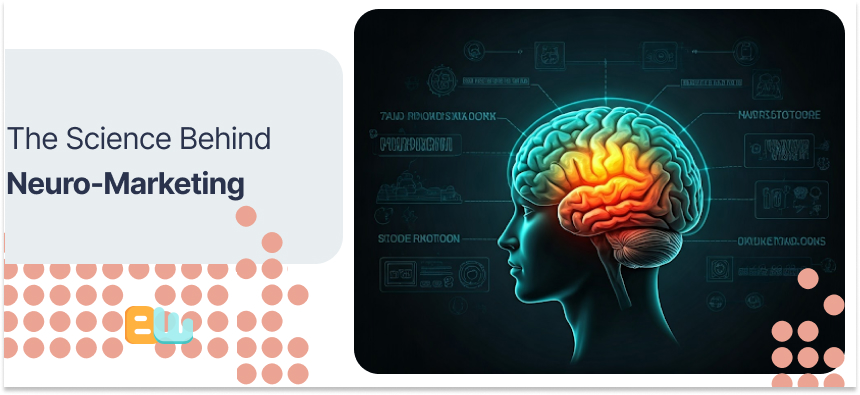
How often do you open Instagram, threads, or other social media platforms during the day just because you are bored? That happens when your brain needs some dopamine to kick in.
Social media platforms are specifically designed to create intermittent variable rewards—the same mechanism that makes slot machines addictive.
Here’s what the research shows about brain activity and social media:
A 2019 study published in Psychological Science found that receiving likes on social media activates the same brain regions as eating chocolate or winning money. The neural pathways are identical.
This explains why engagement-optimized content follows predictable patterns:
- Novelty: The brain pays special attention to anything new or unexpected
- Self-relevance: Content that relates to personal identity gets prioritized
- Social proof: We’re wired to follow group behavior
- Emotional intensity: High-arousal emotions (awe, anger, anxiety) drive sharing
By designing content that aligns with these natural brain responses, you can significantly boost engagement rates.
According to research from the MIT Media Lab, content that evokes high-arousal emotions is 28% more likely to go viral than content that triggers low-arousal states.
5 Key Neurological Triggers That Drive Online Purchasing Decisions
Want to turn browsers into buyers? These five neurological triggers can help:
1. Loss Aversion
People feel the pain of loss more strongly than the pleasure of gaining something of equal value.
How to use it: Use it to create limited-time offers, countdown timers, and “stock running low” notifications on social platforms.
Example: Fashion brand ASOS uses Instagram Stories with 24-hour flash sales, triggering immediate action through fear of missing out.
2. The Anchoring Effect
The first piece of information we receive becomes an “anchor” that influences subsequent judgments.
How to use it: Present your premium option first before revealing more affordable alternatives.
Example: Software companies often display pricing tiers with the highest plan highlighted first, making mid-tier options seem more reasonable by comparison.
3. The Reciprocity Principle
We feel obligated to return favors, regardless of whether we asked for the initial favor.
How to use it: Offer genuine value upfront—free guides, useful tools, or educational content—before asking for the sale.
Example: HubSpot regularly shares comprehensive free resources on social media, building goodwill that later converts to sales.
4. Cognitive Fluency
The brain prefers information that’s easy to process. Things that are simple to understand feel more reliable.
How to use it: Use clear, simple language and visually organized content in your social posts.
Example: Apple’s minimalist social media content has no complexity, making their technology seem approachable.
5. The Endowment Effect
Once we feel ownership of something, we value it more highly.
How to use it: Use language that makes the user feel they already own this product or at least, the change for owning the product is very high.
Example: Warby Parker’s virtual try-on feature lets customers “experience” ownership before purchase, increasing conversion rates by 40%.
The Science of Attention: What Makes Content Truly Memorable?
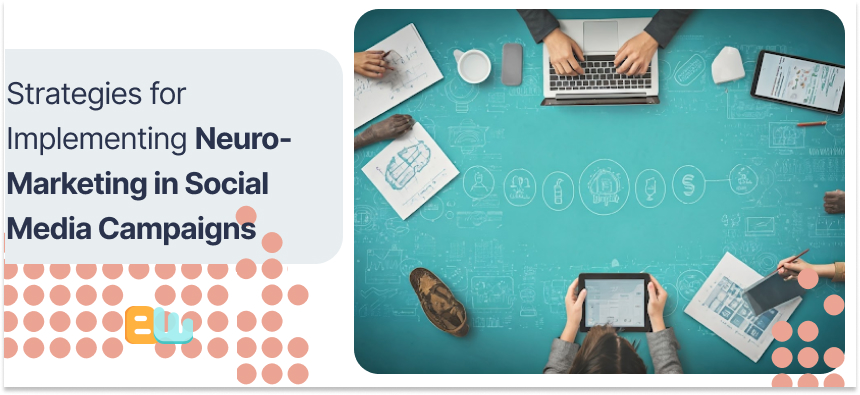
In the attention economy, memory is currency. If your audience doesn’t remember your content, you might as well not have created it at all.
Memory formation follows three stages:
- Encoding: Information enters the brain
- Storage: Information is retained
- Retrieval: Information is accessed later
You need to optimize for all three stages, to create truly memorable content,
Encoding: Getting Information In
The brain pays attention to content that:
- Stands out from the background (pattern interruption)
- Connects to existing knowledge (relevance)
- Triggers emotional responses
- Uses multiple sensory channels (text + visuals + audio)
Research from the Journal of Consumer Psychology found that emotional responses to advertisements increased memory retention by up to 50%.
Storage: Making Information Stick
For information to move from short-term to long-term memory, it needs:
- Repetition (but with variation to prevent habituation)
- Strong emotional associations
- Narrative structure (stories are remembered 22x better than facts alone)
- Personal relevance
Retrieval: Ensuring Information Can Be Accessed
For easy retrieval, information should be:
- Organized into clear categories
- Connected to distinctive cues
- Processed deeply (requiring thought or participation)
- Reviewed periodically (the spacing effect)
This is why interactive social media content—quizzes, polls, and challenges—often generates higher engagement and better brand recall than passive content.
Powerful Neuro-Marketing Techniques for Social Media Success
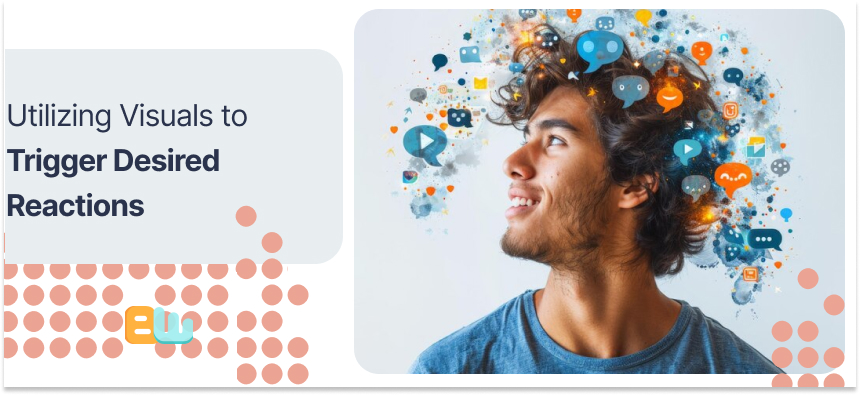
Now let’s get tactical. Here are specific techniques you can implement today:
1. Pattern Interruption
Our brains are prediction machines. When expectations are violated, we pay attention.
Implementation: Create scroll-stopping visuals that break exceptional patterns. Use unexpected color combinations, surprising imagery, or disruptive formatting.
Social media management platform Buffer saw a 63% increase in engagement when they changed their typical visual style to include unexpected elements.
2. Cognitive Ease Through Repetition
Repeated exposure makes information feel more true and trustworthy (the mere exposure effect).
Implementation: Maintain regular visual branding on your platform, but remember to occasionally use diverse content to avoid a monotonous pattern.
Coca-Cola maintains its distinctive red and white color scheme while constantly refreshing its social media imagery.
3. The Von Restorff Effect
Items that stand out from a group are more likely to be remembered.
Implementation: If your industry typically uses certain colors, formats, or tones, intentionally change them to stand out.
Wendy’s Twitter account gained massive attention by breaking the “professional brand voice” convention with sassy, personality-driven tweets.
4. Processing Fluency
Information that’s easier to process feels more trustworthy and likable.
Implementation: Use simple language, clear visuals, and intuitive layouts in all social content.
According to research from Princeton University, using simpler fonts and high-contrast colors can increase belief in the information presented.
Creating Dopamine-Triggering Content That Encourages Sharing
Dopamine is the neurotransmitter associated with pleasure, motivation, and reward-seeking behavior. It’s the brain chemical that makes social media so addictive.
Here’s how to create content that triggers dopamine release:
1. Implement Variable Rewards
Unpredictable rewards generate more dopamine than consistent ones.
Implementation: Create a high-value content series. Some posts offer tips, others tell stories, others provide tools. Keep your audience guessing what valuable content comes next.
2. Create “Information Gaps”
Our brains are always looking for closure. When we feel a gap in our knowledge, we’re motivated to fill it.
Implementation: Use captivating headlines and opening sentences that hint at valuable information without revealing everything upfront.
BuzzFeed mastered this technique with headlines like “This Teacher’s Science Experiment Will Change How You See Breakfast Forever.”
3. Offer Social Validation
The brain releases dopamine when we receive social approval.
Implementation: Create shareable content that makes users look good to their network when they share it. This includes content that signals intelligence, insider knowledge, or positive values.
LinkedIn posts that offer professional insights or industry predictions perform well because sharing them spreads professional awareness.
4. Enable “Completion”
The brain experiences satisfaction when completing tasks or collecting complete sets.
Implementation: Create content series that stand out and add value to your brand. List your tips and insights to create a sense of accomplishment for users who interact with your content.
Visual Processing Psychology: Colors and Layouts That Convert
The human brain processes visual information 60,000 times faster than text. Understanding visual processing can give your content a significant advantage.
Color Psychology for Social Media
Different colors trigger different neurological and emotional responses:
- Red: Creates urgency, increases heart rate, good for limited-time offers
- Blue: Builds trust and security, ideal for financial or health content
- Green: Associated with growth and relaxation, effective for wellness brands
- Yellow: Triggers optimism but can cause eye fatigue in excess
- Black: Signals luxury and exclusivity, effective for premium products
A study by the University of Winnipeg found that color influences up to 90% of quick judgments about products.
Visual Hierarchy and Eye Tracking
Eye-tracking studies reveal predictable patterns in how users process visual information:
- F-Pattern: For text-heavy content, users scan in an F-shape
- Z-Pattern: For design-heavy pages, eyes typically move in a Z formation
- Visual Gravity: Larger elements pull attention first
Implementation: Place your most important elements (especially CTAs) along these natural eye paths. Use size, contrast, and white space to guide attention to key messages.
Instagram ads that place their value proposition in the upper third of the image consistently outperform those with key information positioned elsewhere.
Emotional Storytelling: Why Does the Brain Crave Narratives?
Storytelling isn’t just entertaining—it’s how our brains make sense of the world.
When we hear stories, our brains release oxytocin (the “bonding hormone”) and synchronize with the storyteller’s brain patterns. This creates a deep connection and trust.
The Neural Components of Effective Stories
- Character-centered: The brain’s mirror neurons activate when we observe others, creating empathy
- Tension-based: Cortisol (stress hormone) release keeps us engaged
- Resolution-oriented: Dopamine releases when conflicts resolve
- Concrete details: Sensory-specific language activates the sensory cortex
Implementation: Try to organize your social media campaigns as an ongoing story instead of posting some content one day and another. Establish characters for your brand, create tension, and offer resolution.
Airbnb’s “Belong Anywhere” campaign succeeds by telling emotional stories of hosts and guests connecting across cultures, activating both mirror neurons and the brain’s reward centers.
How Top Brands Leverage Neuro-Marketing in Social Campaigns
Let’s analyze how market leaders apply these principles:
Case Study: Netflix’s Algorithm-Driven Content Presentation Strategy
Netflix doesn’t just use algorithms to recommend content—it uses neuro-marketing principles to optimize how that content is presented.
Personalized Thumbnail Images
Netflix shows different thumbnails for the same content based on your viewing history. If you watch romances, you’ll see relationship-focused thumbnails for a drama. You’ll see humorous thumbnails for the same show, if you watch comedies.
The neurological principle: The brain pays more attention to familiar patterns and personal relevance.
Results: According to Netflix’s tech blog, this approach increased engagement by over 20%.
The Implementation Strategy
- They analyze viewing patterns to identify preference clusters
- They create multiple visual assets for each piece of content
- They test which assets resonate with which viewer segments
- They continuously refine based on engagement data
Key Takeaway: Even without Netflix’s budget, you can create multiple thumbnails and headlines for the same social content and test which performs best with different audience segments.
How Apple Uses Cognitive Bias in Social Media Advertising
Apple’s social media strategy masterfully leverages several cognitive biases:
The Aesthetic-Usability Effect
Users believe that aesthetically appealing designs are more functional.
Implementation: Apple’s social content features clean, minimalist product photography on simple backgrounds, creating the perception of effortless functionality.
The Halo Effect
Positive impressions in one area influence perceptions in other areas.
Implementation: Apple showcases the artistic capabilities of their devices by sharing user-generated content tagged #ShotOniPhone, creating a positive association that extends to all device features.
The Distinction Bias
We understand differences more dramatically when comparing items side by side.
Implementation: Apple rarely shows competitor products, instead it creates before and after comparisons of its products to highlight improvements.
Results: Apple maintains the highest profit margins in the industry despite fierce competition, largely due to their mastery of perception management.
Decoding the Psychology Behind Viral Marketing Phenomena
Viral content isn’t random—it follows predictable psychological patterns:
The Emotional Activation Blueprint
Research by Jonah Berger (Wharton School) analyzed thousands of New York Times articles to identify what drives sharing. The results?
High-arousal emotions drive virality, regardless of whether they’re positive or negative. Content that triggers:
- Awe
- Excitement
- Amusement
- Anger
- Anxiety
…gets shared significantly more than content triggering low-arousal emotions like contentment or sadness.
Implementation: Design content that evokes high-arousal emotional states, particularly awe (which combines surprise and positivity).
The Social Currency Principle
People share things that make them look good to others.
Implementation: Create content that helps users acknowledge their identity, knowledge, or values to their network.
This is why “Which [Character/City/Food] Are You?” quizzes spread rapidly—they allow people to signal aspects of their identity publicly.
Measuring the Effectiveness of Neuro-Marketing Strategies
Traditional metrics don’t tell the whole story when it comes to neuro-marketing. Here’s how to measure impact effectively:
Essential Metrics for Tracking Neurological Impact on Audiences
Beyond standard engagement metrics, consider:
1. Attention Retention
Measure how long users engage with content. Platforms like Facebook provide average watch time for videos.
What it indicates: Strong attention retention suggests your content activates reward pathways in the brain.
2. Emotional Response Mapping
Tools like Affectiva and EmoShape analyze facial expressions and language patterns to analyze emotional responses.
What it indicates: The specific emotional triggers your content activates can eventually lead to improvements.
3. Memory Imprint
Conduct brand recall surveys at intervals after campaigns (24 hours, 7 days, 30 days).
What it indicates: How effectively your content is moving from short-term to long-term memory.
4. Neurological Engagement Score
Some advanced analytics platforms now offer composite scores that combine multiple metrics to estimate overall brain engagement.
What it indicates: The overall neurological impact of your content compared to benchmarks.
A/B Testing Methods to Optimize for Subconscious Responses
Standard A/B testing often misses subconscious impacts. Here’s how to test more effectively:
1. Rapid Exposure Testing
Test content with exposure times under 500 milliseconds to evaluate immediate, pre-conscious reactions.
2. Priming Tests
Analyze how the exposure to your content can affect future, unrelated choices.
3. Implicit Association Testing
Measure the speed at which users interact with your brand before and after exposure to content.
4. Eye-Tracking Heat Maps
Use heat map tools to see exactly where attention goes and how long it stays in different areas of your content.
Facebook’s internal research team found that posts where users fixate on three or more distinct areas generate 41% more engagement than posts with single-point focus.
Ethical Considerations: Where Should Marketers Draw the Line?
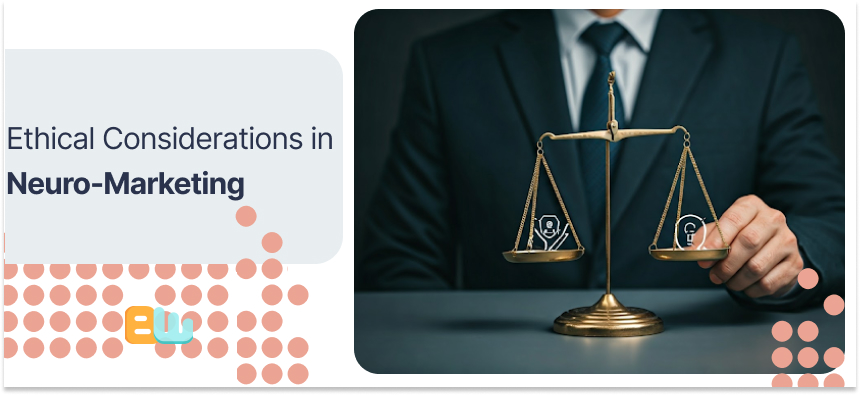
With great power comes great responsibility. Neuro-marketing raises important ethical questions:
The Ethics Spectrum
Consider these guidelines:
- Transparency: Users should know when persuasion techniques are being used
- Autonomy: Techniques should enhance, not override, rational choice
- Value alignment: Persuasion should align with users’ authentic values and needs
- Vulnerability awareness: Extra care should be taken with vulnerable populations
Implementation: Develop clear ethical boundaries for your team. For example, using scarcity to highlight genuinely limited products is acceptable, but manufacturing false scarcity crosses the line.
The most successful brands maintain long-term trust by balancing persuasion with respect for consumer autonomy.
The Future of Neuro-Marketing in Social Media Landscapes
The field is evolving rapidly. Here’s what’s coming:
How AI and Machine Learning Are Revolutionizing Audience Insights
AI is taking neuro-marketing to new levels of personalization:
1. Emotion AI
Advanced algorithms can now detect emotional states from text, voice, and facial expressions with high accuracy.
Implementation: Tools like Affectiva and HumanSight can analyze responses to your content across channels.
2. Neuromorphic Computing
Computing systems modeled after neural networks make advanced prediction of human responses possible.
Implementation: These systems can test thousands of content variations to identify optimal neurological triggers for specific areas.
3. Cross-Platform Emotional Journey Mapping
AI can now track emotional states across multiple touchpoints, creating comprehensive maps of the consumer experience.
Implementation: This can help brands create content that builds on previous emotional states to guide users toward desired actions.
Predictive Analytics: Anticipating Consumer Behavior Before Conscious Decisions
The holy grail of neuro-marketing: predicting decisions before conscious awareness.
Research from the Max Planck Institute demonstrates that brain activity indicating a decision can be detected up to 7 seconds before conscious awareness of that decision.
Emerging technologies are beginning to tap into these pre-conscious indicators:
1. Micro-Expression Analysis
AI systems can detect quick facial expressions (lasting 1/25th of a second) that reveal true emotional responses before conscious control.
2. Galvanic Skin Response Monitoring
Through wearable technology, brands can monitor subtle physiological responses to content.
3. Neural Pattern Recognition
Machine learning algorithms can identify patterns in user behavior that predict future actions with increasing accuracy.
Implementation: While most brands can’t directly measure neural activity, they can use platforms incorporating these insights into their analytics.
Balancing Personalization and Privacy in Neuro-Marketing Approaches
Creating a balance between personalization and privacy can lead to both challenges and opportunities:
The Privacy Paradox
Research shows that while 91% of consumers express concern about data privacy, 81% want personalized experiences.
Implementation: Focus on contextual and behavioral cues rather than identity-based targeting. This allows for neurologically effective personalization without invasive data collection.
The Trust Premium
Brands that maintain transparent data practices while delivering personalized experiences receive higher loyalty and price premiums.
Implementation: Offering clear communication about user data, improves customer’s experience, and provides authentic value in exchange for attention.
Conclusion: The Neuro-Marketing Advantage
The brands that will dominate social media in the coming years will not have the highest budgets—they’ll be those that best understand and respect how the human brain works.
By applying the principles we’ve explored, you can create content that:
- Captures attention in milliseconds
- Triggers powerful emotional responses
- Creates memorable brand associations
- Drives sharing and conversion through natural brain processes
The science is clear: when you align your social media strategy with how the brain naturally processes information and makes decisions, you create an unfair advantage that no algorithm update can take away.
Remember that the most powerful neuro-marketing approaches aren’t about manipulation—they’re about increasing your brand value and making it easier for the brain to recognize it.
Start by using just one of the methods from this guide in your next campaign. Test, measure, and refine it, then add another.
Before long, you’ll see that understanding the brain isn’t just fascinating—it will be a game changer for your social media results.
